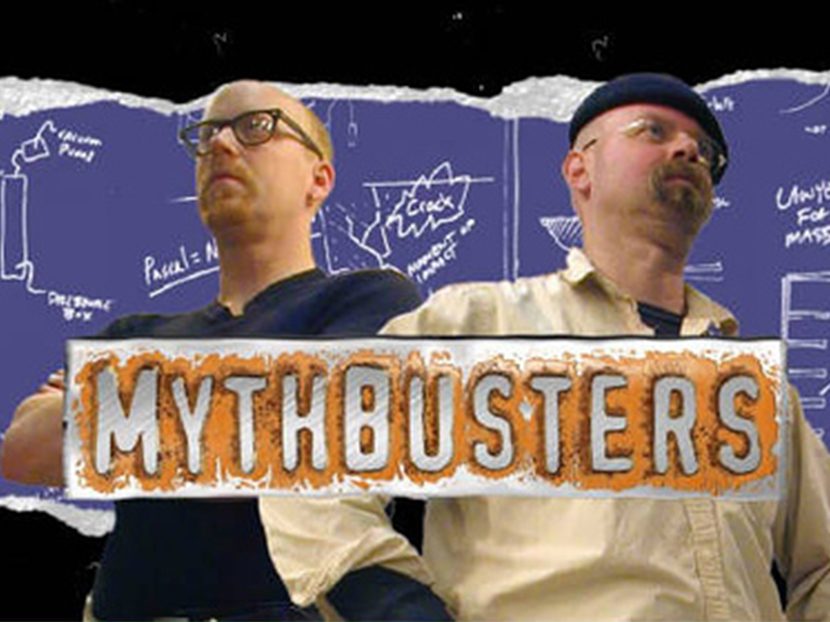It’s Time to Separate Fact from Fiction

MythBuster” is an increasingly popular TV show on cable’s Discovery channel that uses entertaining science to uncover the truth behind well-known myths and legends. From determining whether it’s possible to beat police radar detectors to whether a bull really can cause destruction in a china shop, the hosts mix scientific method with good old-fashioned ingenuity to separate fact from fiction and set the record straight on our mainstream thinking.
Perhaps MythBusters could make a visit to Wall Street, since there’s been a lot of market talk lately which really makes it hard for everyday investors to separate fact from fiction. And with the explosion of the financial media in the last few years, it seems as though investors are beginning to follow the myths as if they are laws written in stone.
This month let’s take a look at two stock market myths that have become very popular and are widely based on historic numbers.
Stock Myth #1:
“Sell In May and Go Away”
The first myth is what’s been referred to as the “Halloween Indicator.” It’s a theory that the period from November through April experiences significantly stronger stock market growth on average than the rest of the year.
This myth has given rise to an investment strategy commonly known by the saying “Sell in May and go away,” in which stocks are sold at the start of May and the proceeds held in bonds or a deposit account until it’s “safe” to buy them again in the Fall, typically around Halloween.
In the last 50 years, average returns between October 31 and May 1 have been more than 6.5%. Conversely, returns from May 1 through October 31 have been less than 1%.
Historical numbers like this are fun fodder for the financial folks who like to create a buzz and sell news (which is their job by the way, and it certainly seems like they're really good at their jobs).
But keep in mind that these are just the average returns and not a guaranteed fixed return that you should expect every year.
Almost every April I have clients who ask, “Roger it’s getting close to the end of April, what are we going to sell?”
It just doesn’t work that way. The most recent,“sell in May and go away” period didn’t exactly worked out as predicted. From May 1, 2014 to October 31, 2014 the Standard & Poor’s 500 was up 7.13%.
Stock Myth #2:
"Wake Me Up When September Ends"
(With a nod to rock band Green Day), this myth says that September is the absolute worst month each year for investing. Sure, looking back there certainly have been plenty of terrible Septembers. But that doesn’t mean EVERY September is going to be a bad one for investors. In fact, September 2013 saw the Dow Jones and S&P 500 go up over 2%. Not such a bad month, eh?
I know, I know, historically September has been a down month for stocks, you say, but once again not every September. There's no real merit in saying, "It’s September so the market will drop.” It’s just a myth.
So the gist of this article is for you to stop getting caught up in all the hype of Wall Street and the financial media. All these myths are really just predictions. It’s like when the weatherman predicts rain for a region, that doesn’t necessarily mean it will rain in your backyard.
I recently conducted a very unscientific experiment on predictions by watching Squawk Box on CNBC for a solid week and keeping track of the number of times the words “predict” or “prediction” were used during the three-hour show. I counted a daily average of 75 times, or more precisely, once every two-and-a-half minutes. And that’s just watching the morning segment! (I’m sure somewhere, Nostradamus is turning in his grave.)
Speaking of hype, have you ever noticed that these shows will bring out one guest who’s very bullish on the market, and in the very next segment interview one who’s quite bearish? Who the heck can you trust?
It’s important to understand is that these stock market predictions are nothing more than that; just predictions. Historical numbers might be interesting for the financial media to base stories on, but that doesn’t mean you have to take the pundits words to heart.
That’s why we rely on point-and-figure technical analysis. It allows us to tune out all the noise created by the financial media and focus on what actually matters. And in the end we can adequately protect and grow our clients' investment and retirement portfolios.





